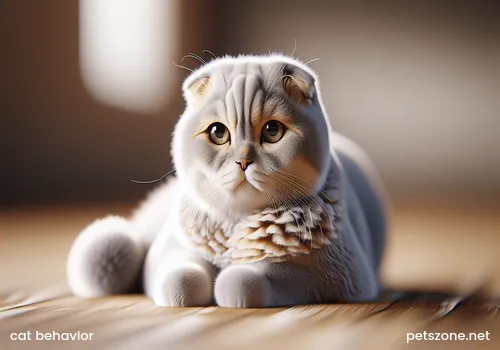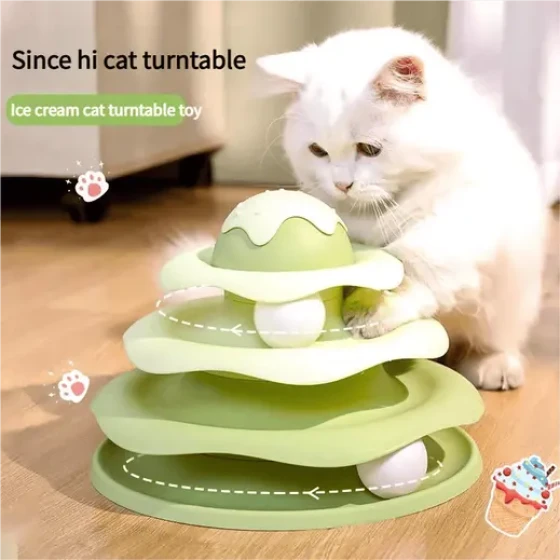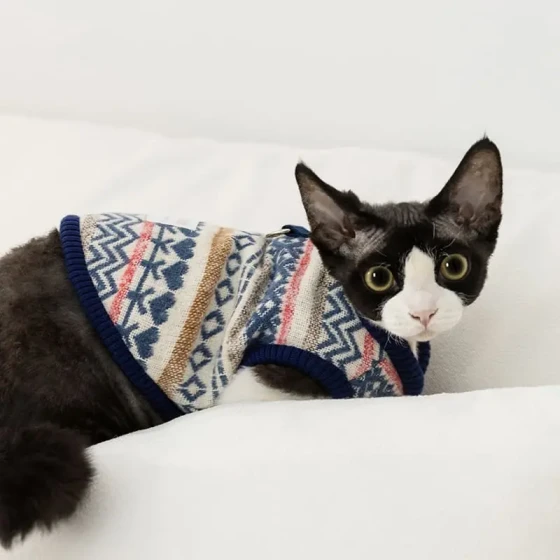The表现 of Cats Admitting Mistakes_Behavior and Emotional Interpretation
Anyone who has raised cats has probably experienced this dramatic scene: the cat, which was just scratching the sofa to shreds a moment ago, suddenly notices you approaching with a stern face, instantly its pupils dilate, ears flatten back, and the tip of its tail begins to twitch slightly—like a schoolchild caught copying homework by the class teacher. At this moment, you wonder: does it really know it was wrong? Or is it simply afraid of being scolded?
To solve this puzzle, we first need to observe the cat’s "survival desire performance" after making a mistake, then analyze the logic behind these behaviors from the perspective of animal behavior science. After all, a cat’s "admission of fault" and the human understanding of "guilt" may be separated by a layer of "reading the atmosphere" intelligence.

1. The Cat’s "Admitting Mistake Behavior": Both Acting and Survival Instinct
Based on observations of my own cat (and the heartfelt summaries of cat owners online), cats’ reactions after mistakes can roughly be divided into three types: probing type, pleasing type, and concealing type. Each type reflects their precise judgment of their "owner’s anger".
1. Probing type: secretly observing and acting accordingly
The classic example is "hiding in the sofa gap peeking out." My cat once knocked over the Pu'er tea I just brewed; its first reaction was to dash under the coffee table, only showing half its face staring at me. If I raised my voice to scold it, its ears would immediately lay flat back like airplane ears, tail tip furiously tapping the floor—this shows extreme nervousness; if I crouched down pretending to pet it, it would slowly come out and gently rub my hand with its head, as if saying "I’m wrong but I won’t admit it."
This "hide-watch-move" triple operation is essentially the cat assessing the "owner’s anger level." They judge the danger based on your tone, expression, and body language: if the anger level exceeds a threshold, they continue hiding; if there are signs of easing, they immediately move to please.
2. Pleasing type: acting cute and offering gifts, exposing their soft spot to you
Some cats belong to the "direct surrender faction." For example, a friend’s Ragdoll cat once broke her perfume bottle and immediately flipped onto its back—knowing that a cat’s belly is the most vulnerable part and usually bites when touched, voluntarily exposing the belly when in the wrong is basically "waving a white flag." Some cats even bring their most treasured toys (even if just a worn-out fuzzball) to your feet, like humans apologizing with gifts; clingier ones hug your leg tightly, rub your pant leg with their head, and purr softly—this is their most skillful "cute power attack."
Behind these behaviors is the cat "exchanging safety": I give you my most precious things (toys, belly), please don’t be angry, okay?
3. Concealing type: pretending to be calm but actually panicking
Some cats belong to the "stubborn but soft-hearted" type. For example, when you scold them, they insist on turning away and licking their fur vigorously—not because they find you annoying, but because they’re so nervous they need self-comfort (licking releases endorphins that relieve stress); or suddenly yawn and stretch as if "I’m not listening to your scolding at all"—while their heart is beating fast enough to play a drum; even more extreme is "blaming other cats"—my colleague has two cats; whenever a cup is broken, the culprit always approaches the other cat and paws at it as if saying "It was them!".
This "concealing behavior" precisely shows the cat is aware "the owner is unhappy now," but doesn’t want to admit it directly, so pretends "not to care" to hide its guilt.
2. Do Cats Really "Know They Were Wrong"? Or Are They Just "Reading the Atmosphere"?
By now, some people might ask: are these behaviors cats genuinely "feeling guilty," or simply "pleasing the owner to avoid punishment"?
Ethologist John Bradshaw mentioned in "The Secret Life of Cats" that: cats’ cognitive level is insufficient to understand "moral right and wrong," their behavior is more of a conditioned response to "consequences." Simply put, cats don’t think "scratching the sofa is wrong," but remember "last time I scratched the sofa, owner scolded me and didn’t give treats, so this time I must be careful."
So, why do they show "admission of mistake" behaviors? Essentially it is "social adaptive learning"—cats gradually learn while living with humans that "when the owner is angry, certain actions can calm the owner down." For example, flipping the belly can trigger human protective instincts; rubbing legs can evoke the owner’s intimacy; these behaviors reduce the chance of "being punished" quickly and naturally become part of the cat’s "survival skill set."
However, this does not mean cats do not have emotions for their owners. Research from Oregon State University found that cats adjust their behavior by observing the owner’s emotional changes, and this "emotional resonance" is the foundation of building trust. In other words, they may not understand "right or wrong," but they care about "whether their owner is happy"—which is already very touching.
3. How to Properly "Correct" a Cat’s Bad Behavior? Don’t Use the Wrong Methods
Since cat "admission of fault" is mostly a reaction to the owner’s emotions, how should we guide them to stop bad habits? The key is to grasp the "timing" and "method," so the cat won’t get more confused the more it’s taught.
1. Catch in the act: stop immediately, don’t punish later
Cats’ short-term memory lasts about 16 hours (long-term memory may be longer), but they are most sensitive to "immediate cause and effect." For example, if it’s scratching the sofa, you should immediately interrupt with a short command like "No!" plus clapping, then put it on the scratching post, press its paws to scratch twice, and give a treat reward—letting it understand "scratching this (scratching post) is rewarded, scratching that (sofa) will be stopped."
If you scold it half an hour later, the cat won’t remember what it did, only thinking "owner suddenly got angry, I feel wronged," which destroys trust instead.
2. Positive reinforcement: rewarding right behavior is more effective than punishment
Many people punish cats by spraying water or tapping their heads, but animal behavior studies show that punishment may cause cats to feel fear, even become aggressive or avoidant. A better approach is "positive reinforcement": when a cat performs a behavior you like (e.g., using the scratching post, not overturning the trash bin), immediately give treats, pet the head, and praise "good job"; when it makes a mistake, use an indifferent attitude (not looking at it, not touching it) to indicate "I’m unhappy now"—cats are more sensitive to "being ignored" than to being scolded.
3. Meet needs: bad behavior may be a "help signal"
Some "bad behaviors" are actually cats expressing needs. For example, frantic sofa scratching may be due to the scratching post being too low or soft, and they need to sharpen claws; overturning trash may mean hunger or curiosity about food smells; nighttime zoomies may be from insufficient daytime play and excess energy.
At this time, instead of scolding, first check the causes: swap to a more suitable scratching post, feed on schedule and in proper portions, play cat wand for 15 minutes before sleep—meeting needs naturally reduces bad behavior.
4. The "Emotional Code" Between Cats and Humans: The Unspoken Caring
After all this, the most touching part about cats’ "admission of fault behavior" is not that they "know they were wrong," but that they "are willing to adjust themselves for you."
They remember your tone when angry, observe your expression when calmed, and use their own way (even if clumsy) to repair the relationship—this "effort to approach" itself is the most precious emotional bond.
Next time when you see your cat curled up after a mistake sneaking a glance at you, or bringing a broken toy to appease you, don’t rush to scold it. Crouch down and stroke its head gently, whisper "No more next time, okay?" You’ll find the tip of its tail quietly curves a small arc—this is its way of saying "Okay, I got it."
After all, what makes a proud cat lower its head is never "right or wrong," but "care."



